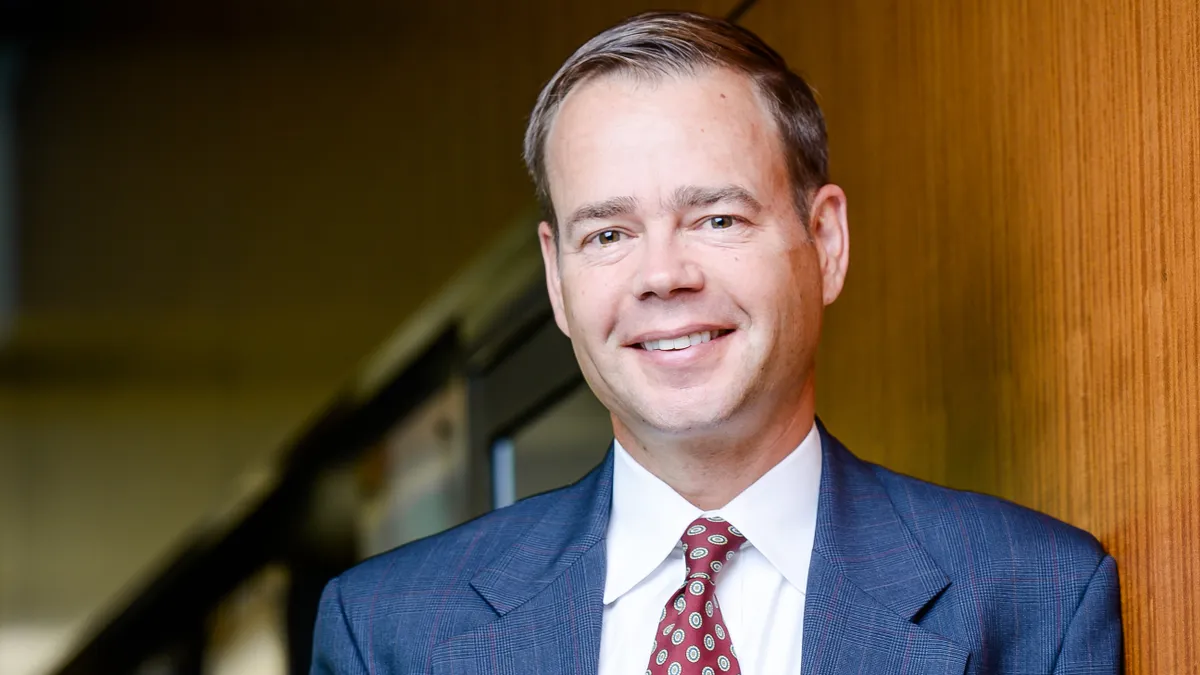Dive Brief:
- David Mortenson, chairman of Minneapolis-based Mortenson Construction, expressed cautious optimism about the state of the industry at the Federal Reserve Bank of Minneapolis’ seventh annual Regional Economic Conditions Conference Jan. 12.
- “In the commercial construction industry, our economic indicators are usually pretty easy: More tower cranes good, less tower cranes not so good,” Mortenson said during a fireside chat with Minneapolis Fed President Neel Kashkari, noting the Twin Cities area has seen fewer cranes recently.
- Though he was more downbeat about the Midwest region specifically, Mortenson said he believes the construction sector nationwide will remain stable, largely due to population growth in the West and Southeast, manufacturing onshoring, renewable energy projects, data center work and a more stable interest rate environment.
Dive Insight:
With the Inflation Reduction Act and CHIPS Act leading to a surge in new projects across the country, Mortenson said finding construction employment should be easy for workers.
Still, the industry needs about half a million workers to meet demand, but, by contrast, Mortenson pointed to the Great Recession, which saw construction lose 2 million employees that took 15 years to regain, indicating the strength in the current employment situation.
He noted the Phoenix-area Taiwan Semiconductor factory project — which has drawn an estimated 10,000 workers, some from surrounding states — as a sign that the industry nationally has a draw.
In order to counteract the labor shortage, Mortenson said he believes the industry needs to ramp up its productivity.
“The problem that we have in our industry is productivity is not changing as fast as you see it change in manufacturing,” Mortenson said. “We're going to be in a tight labor market forever if we don't actually change our productivity curve … I think we’re going to be in trouble in the next decade.”
Asked by Kashkari what he thought of alternative building tactics as a means to boosting productivity, Mortenson said he thinks it could take time before a method like modular could prove completely viable.
He mentioned Katerra, the now-defunct modular builder that had offered a just-in-time delivery approach. The company filed for bankruptcy in June 2021, and Mortenson called it a “$1.5 billion kapoof,” because the company tried to do too much too fast.
Mortenson has three manufacturing facilities in Illinois, Minnesota and Utah. The chairman said he sees competing companies also beginning to adopt more modular building techniques.
“In 20 years I think construction sites are going to look a lot more like a shipbuilding or airplane building manufacturing facility than they do in this custom-made stick-built cut-every-piece-on-site scenario,” he said.
Other topics that Mortenson discussed included:
- Artificial intelligence. Mortenson said using generative design rather than a team of engineers to plan a complex energy project, for example, can shave up to 5% off a project’s budget, but “we’re just scratching at the surface, like most industries are.”
- The electrical market. Mortenson said the first thing ordered on a project is the electrical transformers, due to a 52-week lead time. The materials are in demand due to a surge in energy and manufacturing projects — electricians remain one of the hardest jobs to hire for, for the same reason — but also require significant regulation because most of them are sourced from overseas.
- Office vacancies. Since the COVID-19 pandemic, offices have struggled and Mortenson called it the No. 1 long-term issue for the industry, predicting it would take five to six years to course correct. He noted that urban offices are being converted to residential buildings, but said that few lend themselves to that transition easily.
- Immigration issues. Mortenson acknowledged the opportunities construction can offer for immigrants coming to the U.S., but said getting a visa or green card can be incredibly challenging. “We’ve got to change that,” he said.














